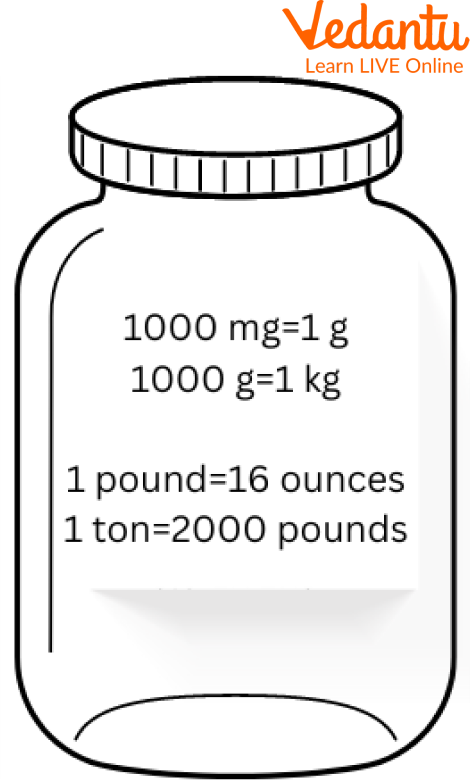




Overview of the Units of Measurement
Units of measurement are basically more, less, and comparable concepts. It is important for kids to understand that this glass contains more milk than another, that this field is larger than another, and that this thing weighs more than that.
Children have intuitive understandings of more, less, and the same from a very young age, even in infancy, even if they may not know these words and, of course, cannot speak about them. It is absolutely important to learn about the different units of measurement used in weight and length, and also solve some questions to learn better. So, let’s begin learning “what is absolute tone km”.
Concept of Absolute Tone Km
The accepted unit for measuring absolute units is the absolute tone-km. The total number of tone-km (or quintal-km, tone-miles, etc.) arrived is determined by multiplying the distance by the weighted sum carried to arrive at absolute (weighted average) units. Distance x respective weight equals absolute tone-km.
The common unit of measurement for commercial units is the commercial ton-km. Multiplying the average weight carried with the total distance travelled yields commercial (simple average) units.
Measuring Units
Finding a number that represents the quantity of anything is called measurement. An accepted quantity that is used to represent a physical quantity is called a measurement unit. Let's learn about some of the standard units used to measure physical quantities.
Length
The term "length" refers to a thing's overall length.
Millimetre (mm)
It is used to measure very small thicknesses or lengths.
For example, Pencil tip length
Centimetre (cm)
It is used to measure short distances.
For Example, Pencil length
Metre (m)
It is used to measure long distances.
For instance, the size of a classroom.
Kilometres (km)
It is used to calculate exceptionally lengthy distances or lengths.
Example: The separation of two locations.
Inch (in)
It is used to establish a small object's length.
Example: A bed's length.
Feet (ft)
It is used to calculate heights and short distances.
Building heights, for instance.
Mile
It is used to determine large distances.
Example: The separation of two locations.

Units of Length Measurement
Weight
The amount of matter that makes up an item determines its weight and it is calculated by a weighing machine.

Weight Machine Device
Milligrams (mg)
It is used to gauge extremely light objects.
like in medicines
Gram (g):
It is used to measure tiny objects.
such as weighing potatoes, spices, etc.
kilo (kg):
It is used to gauge the weight of objects.
Example: Body weight
Ounce (oz) :
It is used to calculate minor amounts.
For example, bread.
Ton:
It is a unit of measurement for significantly heavier objects.
such as trucks

Units of Weight Measurement
Questions to Solve and Learn
Q 1. How do you convert 2400 Km to miles?
Ans. As we know that 1 Kilometre (Km) = 0.621 Miles,
To Calculate 2400 Kilometre into Miles,
=2400 x 0.621
=1491.29 Miles
Q 2. How many Kilograms equals 26780 Grams?
Ans. 1 kg = 1000 Gm as we already know,
26780 Gm = 26780/1000 Kg
26780 Gm= 26.78 Kg.
Mountain Ranges and Their Spreads in Units of Measurement
Who doesn’t love visiting the mountains? Let’s learn about some of the greatest mountain ranges and their spread via Units of measurement to understand the applications better.
(Image will be uploaded soon)
Mount Everest, The Highest Mountain Range
Honshu
The largest of Japan's four major islands, it is situated between the Pacific Ocean's eastern coast and the Sea of Japan (west). Its width fluctuates substantially and it creates a northeast-southwest arc that measures roughly 800 miles (1,287 km).
Himalayas
The mountain range includes Mount Everest, the highest peak in the world, as well as over 100 other Himalayan summits that climb above 7,300 metres (24,000 feet) of sea level.
Karakoram
Karakoram is the location of the world's highest closely spaced summits towering over 7,620 m (25,000 ft) from sea level, including the globe's second-highest peak, K2.
Mountains of Kunlun
The Kunlun Mountains, which run over 2,000 km (1,250 miles) in central China, are the widest chain of mountain ranges in Asia. It serves as the Tibetan Plateau's northern boundary.
Summary
In this article, you learned about units of measurement and absolute tone km. Absolute ton-kms are used to measure absolute units. It is a standard unit of measurement. Units of measuring length and weight are discussed in the article with help of some sample questions of conversion. Examples of the range of various mountains (Natural/Environmental examples of length unit measurement) are taken. Information and range of Honshu, Himalayas, Karakoram, and mountains of Kunlun are provided in the last.
FAQs on What is Absolute Tone Km?
1. Who introduced the concept of units of measurement?
James Clerk Maxwell presented a clear system in the middle of the 19th century that defined a small number of units of measurement as base units and all other units of measure, called derived units, in terms of the base units. Three base units for length, mass, and time were suggested by Maxwell.
2. What measurement is most often used?
The metric system, which is commonly used in Europe and the majority of the rest of the world, and the roman or British system, a form of which is now mainly used in the USA, are the two most popular systems of measurement.
3. Which mountain range is the tallest in the world?
The Himalayas is the highest mountain range in the world, with Mount Everest representing its highest point. Asia is home to eight of the world's ten tallest mountain ranges.











